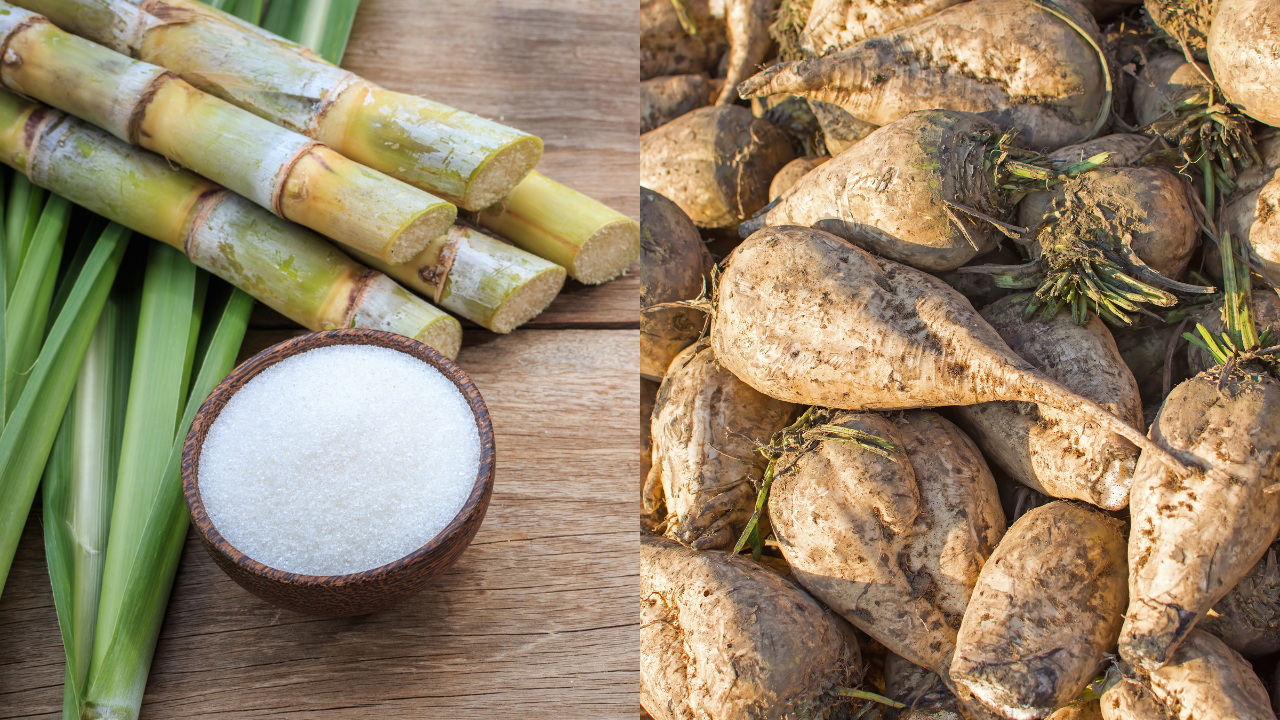The agricultural practices for beet sugar vs cane sugar contribute to differences in harvesting time.
The agricultural practices for beet sugar vs cane sugar contribute to differences in harvesting time.
Blog Article
Discover the Uses and Perks of Beet Sugar Vs Cane Sugar in Your Daily Diet Plan
Discovering the distinct qualities of beet and cane sugar reveals even more than just their sweetening abilities; it highlights their special influence on wellness and cooking arts. Beet sugar, known for its refined taste, is often favored in delicate treats, whereas cane sugar, with its hint of molasses, includes splendor to robust meals. Each type holds its own dietary account and glycemic implications, inviting a much deeper understanding of their duties in a balanced diet regimen and sustainable intake techniques.
Origin and Production Processes of Beet and Cane Sugar

The unique climates and soil kinds needed for expanding sugar beets and sugarcane add to distinctions in their farming techniques and geographical distribution, affecting the economics and sustainability of their manufacturing. beet sugar vs cane sugar.
Nutritional Comparison Between Beet Sugar and Cane Sugar
In spite of stemming from different plants, beet sugar and cane sugar are nutritionally very comparable, both mostly being composed of sucrose. Each provides about 4 calories per gram, converting to roughly 16 calories per teaspoon. Structurally, both sugars are composed of around 99.95% sucrose, with very little quantities of various other substances like moisture and trace minerals, which do not significantly change their nutritional accounts.

Eventually, when choosing in between beet sugar and cane sugar based on nutritional web content alone, both offer similar benefits and drawbacks as they are essentially kinds of the very same molecule-- sucrose, offering quick power without other nutrients.
Effect On Health And Wellness: Glycemic Index and Caloric Material
Checking out additionally right into the effects of beet sugar and cane sugar on health and wellness, it is essential to consider their glycemic index and caloric content. The glycemic index (GI) of both Going Here beet and cane sugar is around 65, classifying them as high-GI foods, which can trigger quick spikes in blood sugar degrees.
Each more helpful hints sort of sugar has around 4 calories per gram, making their caloric material matching. For those monitoring caloric consumption, particularly when taking care of weight or metabolic health conditions, understanding this equivalence is crucial (beet sugar vs cane sugar). Nonetheless, too much usage of any high-calorie, high-GI food can add to wellness issues such as weight problems, heart problem, and insulin resistance.
Environmental and Economic Factors To Consider of Sugar Production
Beyond wellness effects, the manufacturing of beet and cane sugar additionally raises significant environmental and financial problems. Sugar beet farming tends to require cooler climates and has a lower geographical impact contrasted to sugar cane, which thrives in tropical regions. Both crops are intensive in terms of water usage and land line of work, potentially leading to logging and water scarcity. Economically, the international sugar market is extremely unpredictable, affected by modifications in worldwide trade policies and subsidies. Many nations incentivize sugar manufacturing through financial backing, skewing market costs and impacting small farmers negatively.
Additionally, the usage of pesticides and fertilizers in both beet and cane sugar cultivation can cause soil destruction and contamination, further affecting biodiversity and local water bodies (beet sugar vs cane sugar). The selection in between cultivating sugar beet or cane usually pivots on local ecological problems and economic elements, making the sustainability of sugar production an intricate issue
Culinary Applications and Flavor Distinctions
While the ecological and economic aspects of sugar manufacturing are certainly considerable, the selection in between beet and cane sugar additionally influences cooking applications and flavor profiles. Beet sugar, acquired from the sugar beet plant, is known for its remarkably neutral taste.
Walking stick sugar, extracted from sugarcane, often maintains molasses traces, which pass on a distinctive richness and deepness. This mild have a peek at this site molasses taste improves the complexity of baked goods, sauces, and marinades. It is particularly preferred in products where a sugar touch is preferred, such as in brownies or gingerbread. The mild variant in wetness web content in between beet and cane sugar can influence the texture and consistency of meals, making cane sugar a favored choice for particular recipes that benefit from its unique properties.

Conclusion
Finally, both beet and cane sugar have unique origins and production processes, supplying comparable nutritional accounts with small differences in sodium material and flavor. While their influence on health, specifically regarding glycemic index and calories, is equivalent, the choice in between them typically boils down to environmental, economic elements, and certain culinary needs. Recognizing these aspects can direct customers in making educated choices that line up with their wellness goals and taste choices.
Report this page